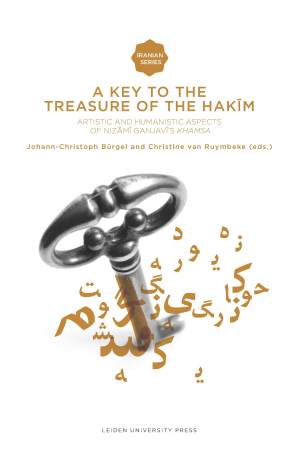Deze "sleutel" om de 'Khamsa' te ontsluiten bestaat uit dertien essays door specialisten op het gebied van Perzische Studies. Elk essay richt zich op een ander aspect van de 'Khamsa', een verzameling van vijf lange gedichten geschreven door de Perzische dichter Nizami van Ganja.
Nizami (1141-1209) woonde en werkte in Ganja, in het huidige Azerbeidzjan. Hij wordt algemeen erkend als een van de belangrijkste dichters van het middeleeuwse Perzië. Hij schreef poëzie op het breukvlak mystiek, romances en heldendichten en drukte zijn stempel op talloze jonge dichters, zoals Hafez, Rumi en Saadi, over een gebied dat zich uitstrekt van het huidige Turkije, Azerbeidzjan, Armenië, Georgië, Iran, Afghanistan, Oezbekistan, Tadzjikistan, Pakistan, India.
De essays dit boek zorgen voor een nieuwe kijk op de 'Khamsa'. Zij richten zich op onderwerpen als mystiek, kunstgeschiedenis, vergelijkende literatuur, wetenschap en filosofie. Ze laten zien hoe de klassieke Griekse kennis zich op een unieke manier vermengde met het Perzische verleden en de islamitische cultuur.
Dit boek is onmisbaar voor de specialisten op het gebied van Perzische literatuur, maar ook goed leesbaar voor de geïnteresseerd leek.

